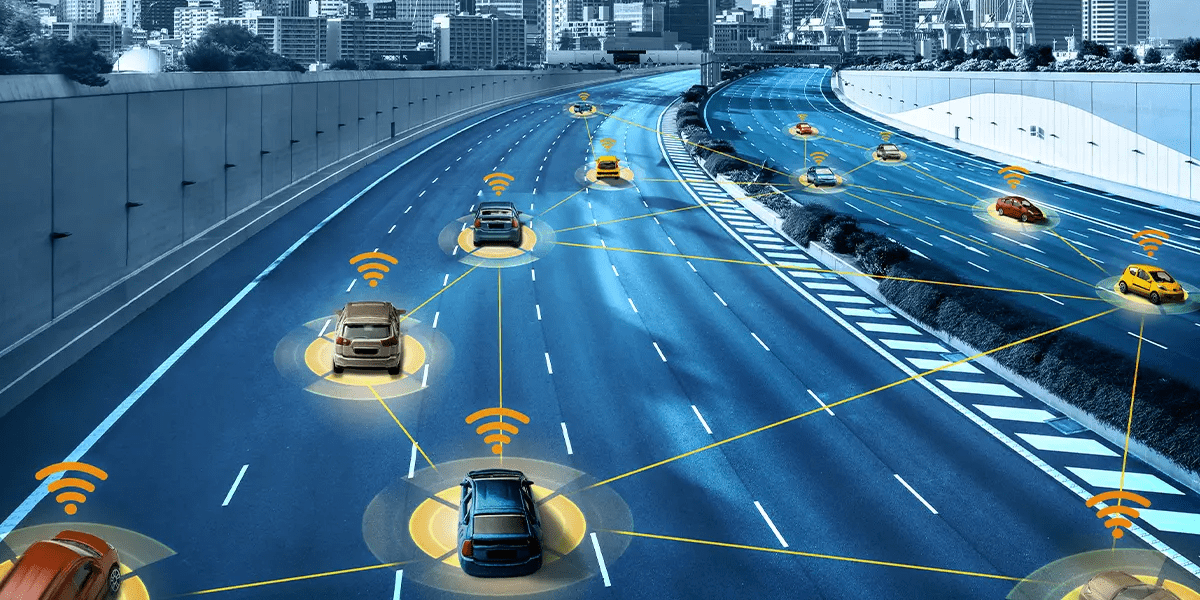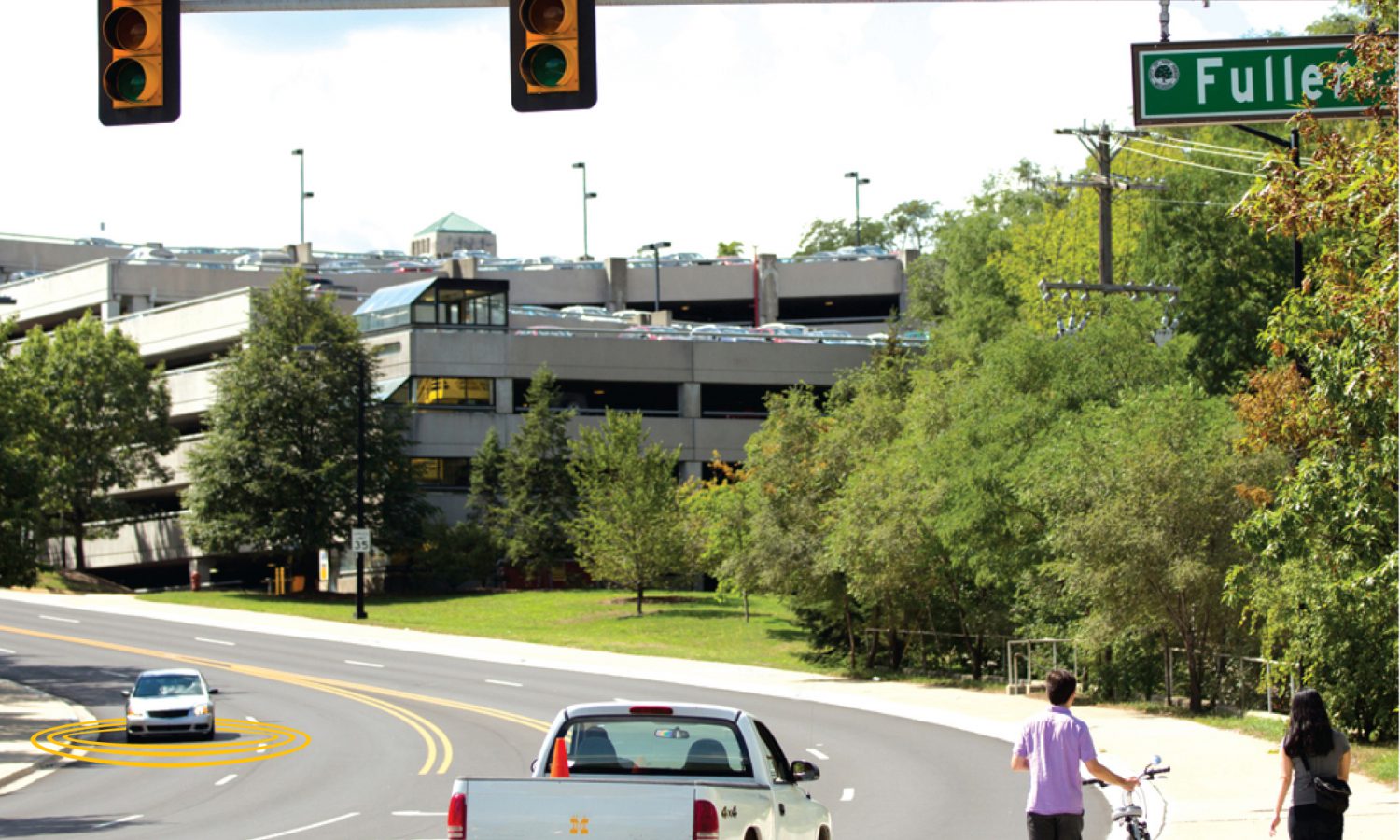Vehicle-to-everything technology represents a transformative leap in the world of transportation, connecting vehicles with their surroundings and ushering in a safer, more efficient future. With its ability to enable real-time communication between vehicles, infrastructure, pedestrians, and the network, V2X has the potential to revolutionize road safety, reduce traffic congestion, and enhance overall transportation efficiency. As this technology continues to advance, we can anticipate even greater innovation and transformative changes in the way we navigate our roads. In this blog, we will delve into the definitions, pros & cons of V2X technology.
1. What is V2X?
V2X, short for Vehicle-to-Everything, is an innovative technology that enables seamless communication between vehicles and the surrounding environment. It represents the next evolution in transportation, revolutionizing the way vehicles interact with each other, infrastructure, pedestrians, and even smart devices.
Real-world studies have demonstrated the tangible benefits of V2X technology. According to a report by the National Highway Traffic Safety Administration (NHTSA) in the United States, V2V communication has the potential to prevent up to 80% of non-impaired crashes, potentially saving thousands of lives annually. Additionally, a study conducted by the European Commission's Joint Research Centre estimated that V2X-enabled applications could reduce travel time by up to 15% and decrease fuel consumption and CO2 emissions by approximately 10%.

V2X is expected to shape the future of transportation
V2X encompasses various communication technologies, including:
- Vehicle-to-Vehicle (V2V): enables vehicles to exchange critical information, such as location, speed, and intentions, to enhance safety and improve traffic flow.
- Vehicle-to-Infrastructure (V2I): facilitates communication between vehicles and roadside infrastructure, enabling real-time data exchange and intelligent transportation system integration.
- Vehicle-to-Pedestrianm(V2P): allows vehicles to detect and communicate with pedestrians, ensuring pedestrian safety.
- Vehicle-to-Network (V2N): involves vehicle connectivity with the wider network, enabling data exchange with cloud-based services and other connected devices.
Imagine a scenario where a connected vehicle approaches a busy intersection. Through V2X technology, it can communicate with traffic signals, pedestrians' smartphones, and other vehicles in the vicinity. The vehicle receives information about upcoming signal changes, pedestrian presence, and the speed of other vehicles. This enables the vehicle's advanced driver assistance systems (ADAS) to anticipate potential conflicts and provide alerts to the driver, significantly reducing the risk of accidents and enhancing overall traffic efficiency.
Vehicle-to-everything technology holds immense potential in shaping the future of transportation. By enabling seamless communication, it can significantly enhance road safety, reduce traffic congestion, and improve overall transportation efficiency. V2X has the capability to mitigate accidents caused by human errors, alert drivers to potential hazards, and optimize traffic flow by coordinating with traffic management systems. Furthermore, V2X can contribute to environmental sustainability by facilitating efficient routing and enabling the integration of electric vehicles into smart grids. The possibilities are vast, and as V2X technology evolves, we can expect transformative changes in the way we travel and interact with our surroundings.
2. Advantages of V2X
a. Enhanced Road Safety
V2X technology significantly enhances road safety by enabling vehicles to exchange critical information in real-time. For example, through Vehicle-to-Vehicle (V2V) communication, a connected vehicle can receive information about nearby vehicles' speed, position, and direction. This enables the vehicle's advanced safety systems to detect potential collision risks, issue warnings, and initiate appropriate actions to prevent accidents. By providing drivers with an extra layer of awareness and intervention, V2X technology has the potential to save lives and reduce injuries on the road.
b. Improved Traffic Efficiency
V2X technology plays a vital role in optimizing traffic flow and reducing congestion. Vehicle-to-Infrastructure (V2I) communication allows vehicles to receive real-time data from traffic management systems and infrastructure components such as traffic signals, road sensors, and toll booths. With this information, vehicles can adjust their speed, route, and timing to optimize travel efficiency.

V2X can improve traffic efficiency
For instance, a connected vehicle can receive traffic signal information in advance, allowing the driver to adjust their speed to catch green lights, reducing unnecessary stops, and improving overall traffic flow.
c. Pedestrian and Cyclist Safety
Vehicle-to-everything technology extends its benefits beyond vehicles by enabling Vehicle-to-Pedestrian (V2P) and Vehicle-to-Cyclist (V2C) communication. Equipped with V2X capabilities, vehicles can detect the presence of pedestrians or cyclists in their vicinity and issue alerts to both the driver and the vulnerable road user. This proactive warning system enhances safety for pedestrians and cyclists, reducing the risk of accidents in situations where visibility may be limited, such as at intersections or during nighttime.
d. Traffic Incident Management
V2X technology facilitates efficient traffic incident management by enabling real-time communication between vehicles, emergency services, and road operators. In the event of an accident or road hazard, connected vehicles can relay information to other vehicles in the vicinity, warning them of the upcoming danger and allowing them to take necessary precautions. This prompt dissemination of information helps to prevent secondary accidents, facilitates quick emergency response, and minimizes the impact of traffic incidents on overall traffic flow.
e. Environmental Benefits
V2X technology contributes to environmental sustainability by enabling smarter and greener transportation. By optimizing traffic flow, reducing congestion, and improving route planning, V2X helps reduce fuel consumption and emissions. For instance, through Vehicle-to-Network (V2N) communication, connected vehicles can receive real-time data about traffic conditions, road topology, and weather, allowing them to select the most fuel-efficient routes and avoid congestion-prone areas. This results in reduced greenhouse gas emissions and a more eco-friendly transportation system.
3. Drawbacks of V2X
V2X communication technology has been developed to enable connected and autonomous vehicles to communicate with each other and with the surrounding infrastructure. While V2X has many benefits, such as improving safety and reducing traffic congestion, there are also some drawbacks to this technology.
One major drawback of V2X is the cost of implementing the necessary infrastructure. V2X requires a network of sensors and communication devices to be installed along roads and highways, which can be expensive. Additionally, this infrastructure must be maintained and updated over time, adding to the ongoing costs.
Another drawback is the potential for cybersecurity risks. V2X communication relies on wireless networks, which can be vulnerable to hacking and other cyber threats. This could lead to malicious attacks on the connected vehicles or the infrastructure, potentially causing accidents or disruptions in traffic flow.
Privacy is also a concern with V2X. The technology requires collecting and sharing large amounts of data about vehicles and their occupants, including location, speed, and other sensitive information. There is a risk that this data could be accessed or misused, compromising the privacy and security of drivers and passengers.
4. Conclusion
In conclusion, V2X technology holds immense potential in transforming the future of transportation. As we continue to unlock the full potential of V2X, we can look forward to a future where our roads are not just means of transportation, but vibrant hubs of innovation and collaboration. The journey toward this future has just begun, and the possibilities are fascinating.
Please do not hesitate to contact us if you are looking for a V2X technology consultant. Established in 2015, SotaTek is the largest part of SOTA Holdings, a global Software Development as a Service (SaaS) and IT Consulting Group. Our 1000+ employees have experience serving worldwide clients in different sectors. So, if you need a V2X Development Partner, please leave us a message for a free consultation!





